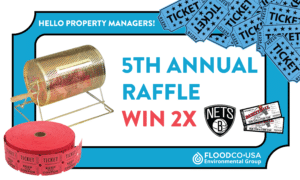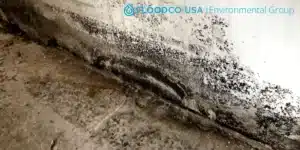
“What’s the purpose of a crawl space?” That’s a common homeowner question. While many homes along the Gold Coast of New Jersey are built with finished and unfinished basements, there are many that utilize a small open space that acts as a barrier between the floor and the ground. This space not only protects the inhabitants from the harmful effects of the cold, damp ground, it also provides easy access to pipes, wiring, and HVAC ducts.
Although crawl spaces are more economical than basements and sometimes make it easier to repair pipes, wires, and air/heating systems, they can also lead to a variety of problems due to floods, standing water, burst pipes, mold, and other hazards.
To stay ahead of these potential problems and hazards it’s best to apply the following crawl space maintenance tips.
Inspect Your Crawl Space
The best way to prevent a minor crawl space problem from becoming a full-blown disaster is to perform frequent inspections. Each month, grab your flashlight, put on a mask and goggles, and wear some old clothes so you can inspect your crawl space for any signs of standing water, water damage, mold, or rot. If everything seems normal, then you’re good to go. But if you see large puddles, visible water stains, wet insulation, or mold growth then something is wrong and it needs to be fixed. It could be a minor issue that requires a simple solution or it could be the sign of something more serious. Whatever is causing the problem, now is the time to get ahead of it before it leads to structural damage and flooding or poses health risks for you and your family.
Determine the Cause
If you discover standing water, signs of water damage, or mold growth in your crawl space, there could be several causes. If you had severe storms or melting snow in your neighborhood, then it stands to reason that there would be visible puddles and pools of water as a result. But pooling water, damage, and mold could be the sign of other problems.
Faulty plumbing or sewages lines could be causing leaks that can linger and lead to much bigger issues. Make sure all of your pipes, waste lines, and sewage drains are not broken or clogged.
Clogged gutters and spouts that are not properly draining the rainwater away from your home could be causing water to flow into the crawl spaces leading to floods, water damage, mildew, and mold. It’s a good idea to clean all the leaves, dirt, and debris out of your rain gutters at the start of every season. If rainwater is still collecting in crawl space areas, then you may need to add extensions to your gutters so the water flows away from your home.
Another reason for water collection and mold growth is improper ventilation of the crawl space. If this area doesn’t have enough ventilation, humidity builds up which causes excessive moisture and that results in foul odors, rot, and mold. Make sure your crawl space vents are clean and clear of obstructions.
Improperly vented clothes dryers can also lead to water damage and mold growth in crawl spaces. If the warm air emitted by a clothes dryer becomes trapped in the crawl space, condensation and moisture can be up and cause issues. By following these simple maintenance tips, you may be able to prevent or reduce damage to your crawl space and home. If your home’s crawl space has experienced water damage that’s resulted in issues like odors and mold, contact FloodCoUSA to learn how our trained and certified experts can help!



